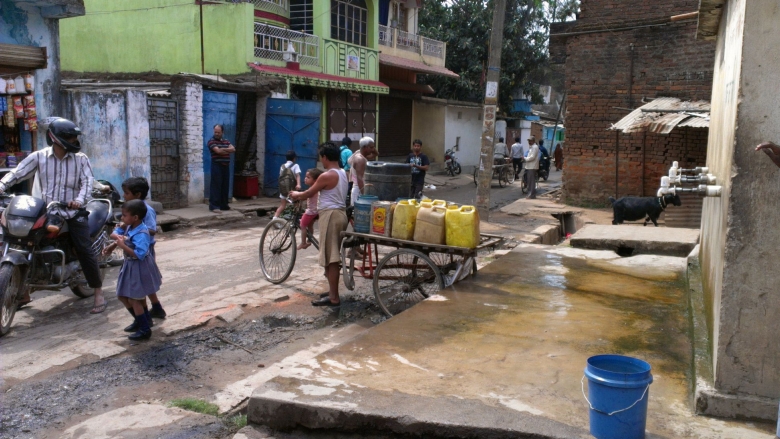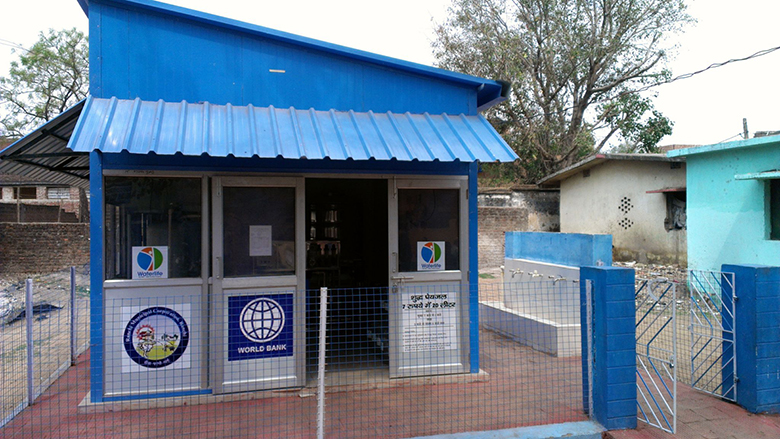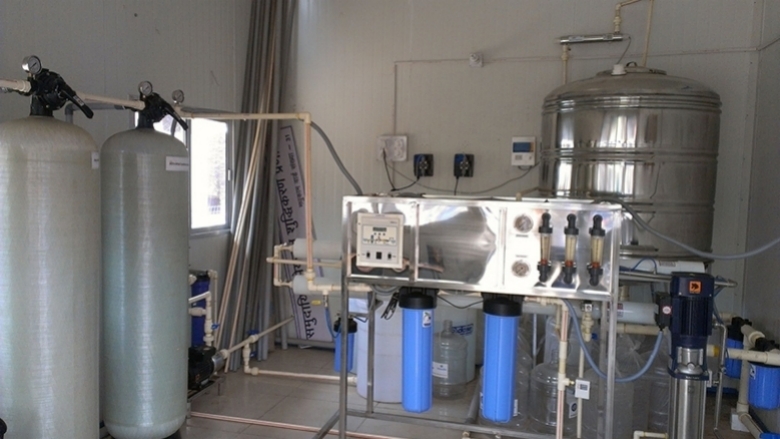As part of the Government of India’s initiative to scale impactful solutions throughout the global south, two World Bank Group supported social enterprises, Waterlife India and GNRC Private Hospitals, were showcased as scalable solutions at the Science and Technology Innovation Expo during the India-Africa Forum Summit October 27 – 29, 2015. Both enterprises were selected through a competitive process as ready to market innovations with the potential to scale across Africa by the Government of India.
"This Expo allowed us to display impactful innovations from India that can provide solutions to development challenges across Africa,” said, Dr. A. Didar Singh, Secretary General from the Federation of India Chambers of Commerce India (FICCI), one of the organizers of the event. “Both Waterlife and GNRC are excellent examples of how social enterprises are providing basic services to people who live without them.”
Waterlife India establishes community water systems that are strategically placed throughout slums and rural areas of India that lack access to safe drinking water. Their innovative filtration system connects to public water sources and the treated water satisfies the highest international standards, and is distributed through on-site Water ATMs for a fraction of the price of alternatives. The company was selected as a 2013 India Development Marketplace grantee to scale its model in Jharkhand and Orissa. Waterlife also received a $500,000 grant from FICCI’s Millennium Alliance program for 400 additional installations in Jharkhand, which will allow it to reach more than two million poor.
GNRC Hospitals Private Limited is a private hospital company that focuses on delivering ultra-low cost health care in North East India. Through architectural innovations and placing their hospitals in strategic locations, GNRC is able to provide patients with services that range from 10 to 600 rupees (USD 00.15 – 10). Additionally, the GNRC hospitals are in areas where healthcare is not usually available. From there, the GNRC doctors map out villages where people would have a hard time accessing the hospital and regularly send out mobile vans that provide healthcare services. GNRC was granted the 2014 India Development Marketplace grant to scale their operations at their Guwahati hospital.
Social enterprises such as GNRC and WaterLife often see immediate success as investors, both private and public, provide seed funding and see early stage returns. Unfortunately, many of these social enterprises lose their early success as funding ends, and they still lack the capacity to scale their operations to other regions, cities, or countries. At this stage, investors are less likely to fund scale up programs as they show little returns.
The World Bank Group’s Social Enterprise Innovations program aims to support social enterprises through this time period in order to ensure that the social enterprise innovations have the potential to reach maturity and scale, and push the frontier of service delivery to the most deprived. Because of this intervention, hundreds of organizations are able to expand their reach, develop their capacity, and share their lessons with other social enterprises and governments.
Both social enterprises were supported through the Social Enterprise Innovations program and its Development Marketplace competitions platform. The program supports the mainstreaming of innovations from social enterprises in service delivery into the World Bank Group’s engagements with governments across the world. It employs a multifaceted approach that combines four components: i) facilitating a public-private dialogue in order to address systemic constraints and opportunities for scaling social enterprises; ii) leveraging, knowledge and experience in the social enterprise sector to facilitate learning and uptake of models that work, (iii) producing learning materials that address gaps in operating capacity of social enterprises, and (iv) supporting WBG staff and partners through competitions to identify social enterprise innovations with potential to scale. Through this approach, the program positions the social enterprise agenda as an important solution to improving the lives of those who live in extreme poverty.



